Archive
2021
KubaParis
Bones
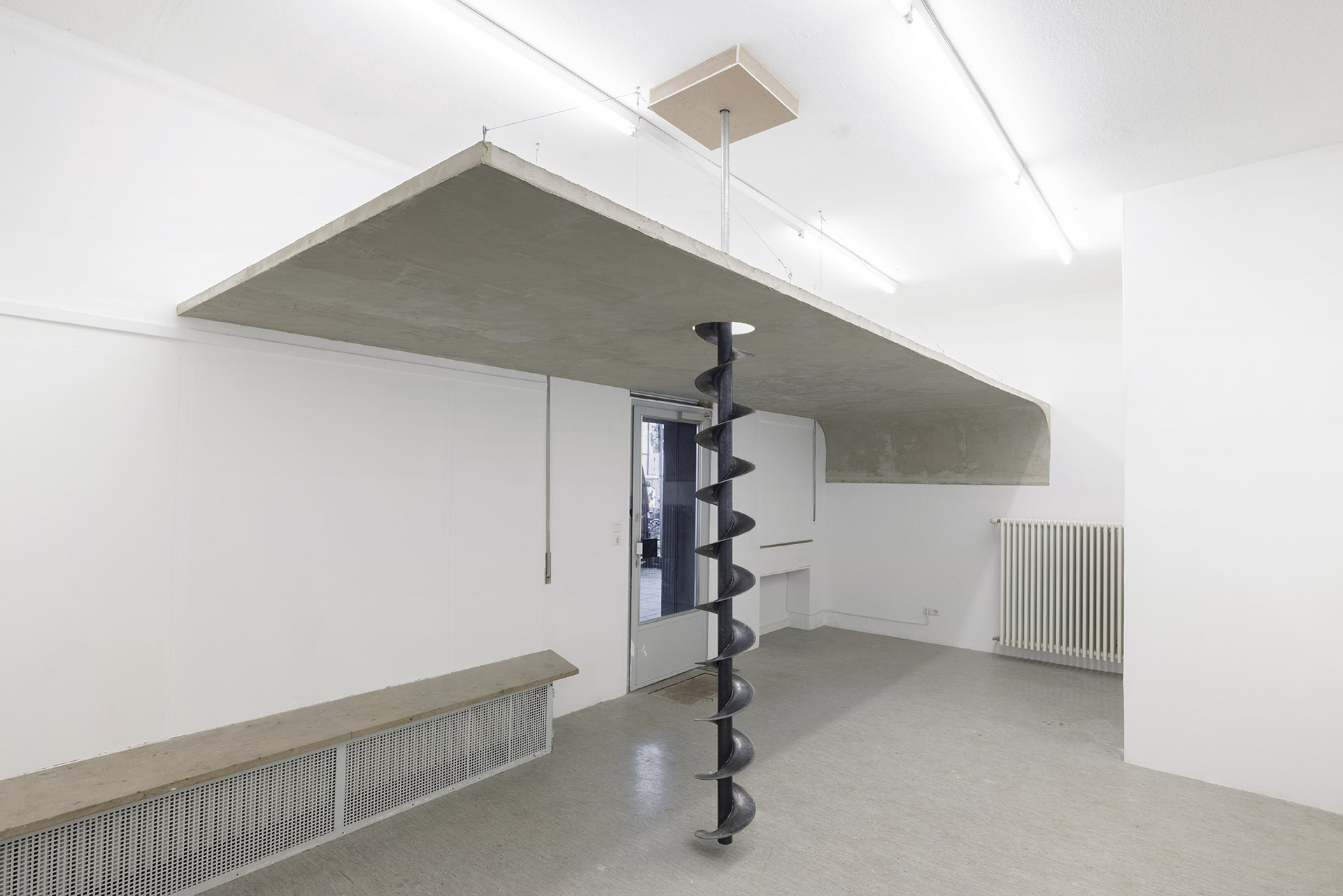
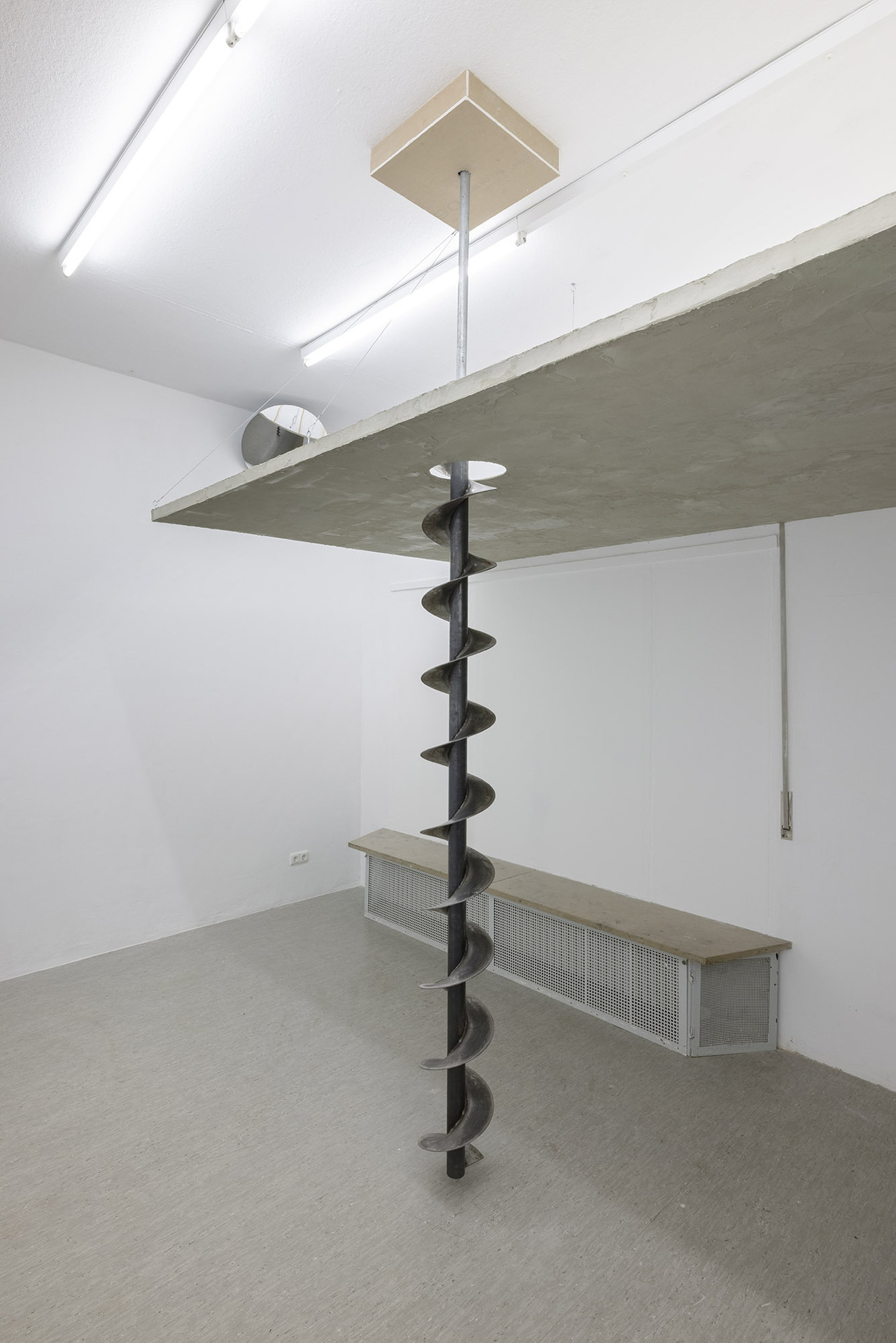
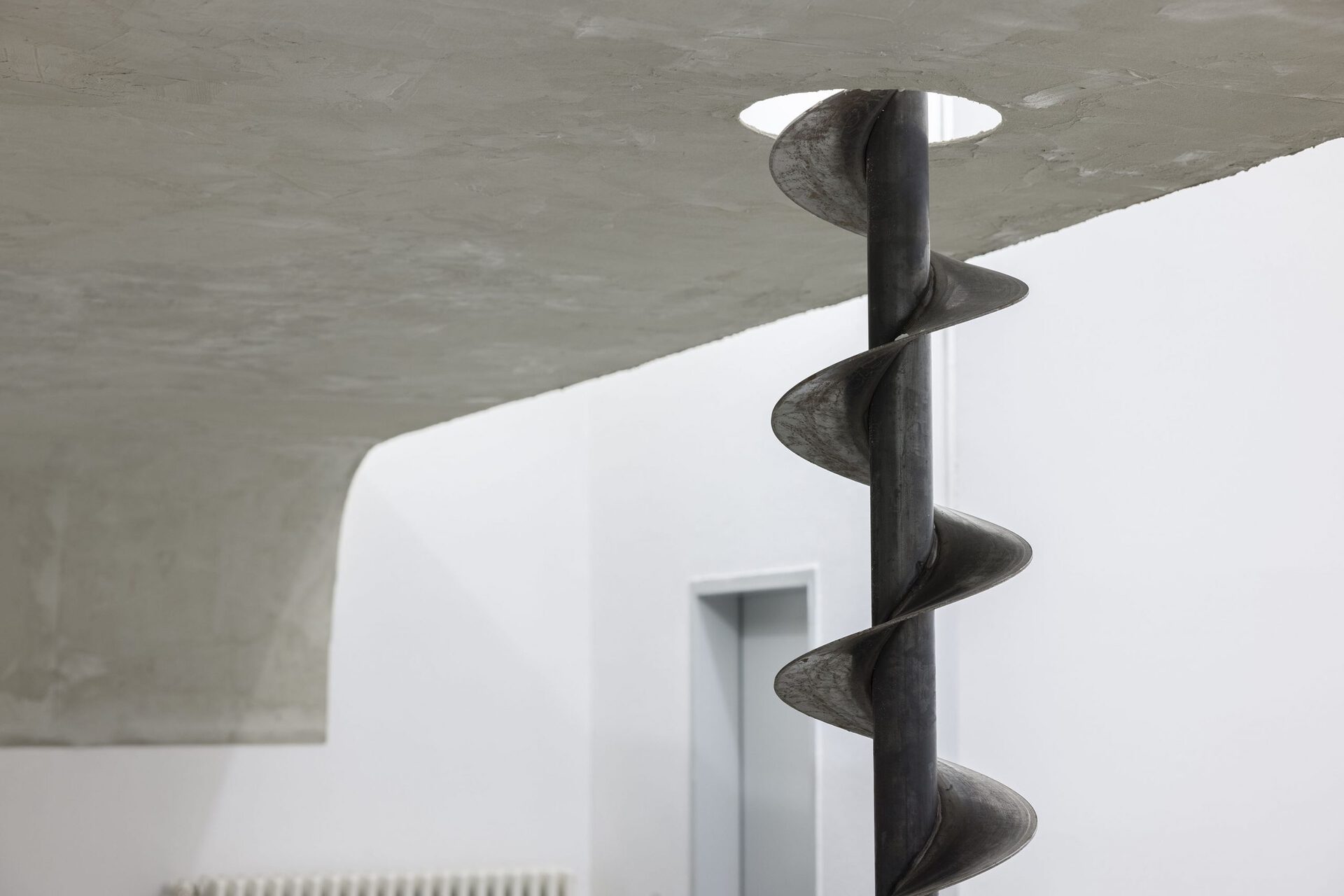
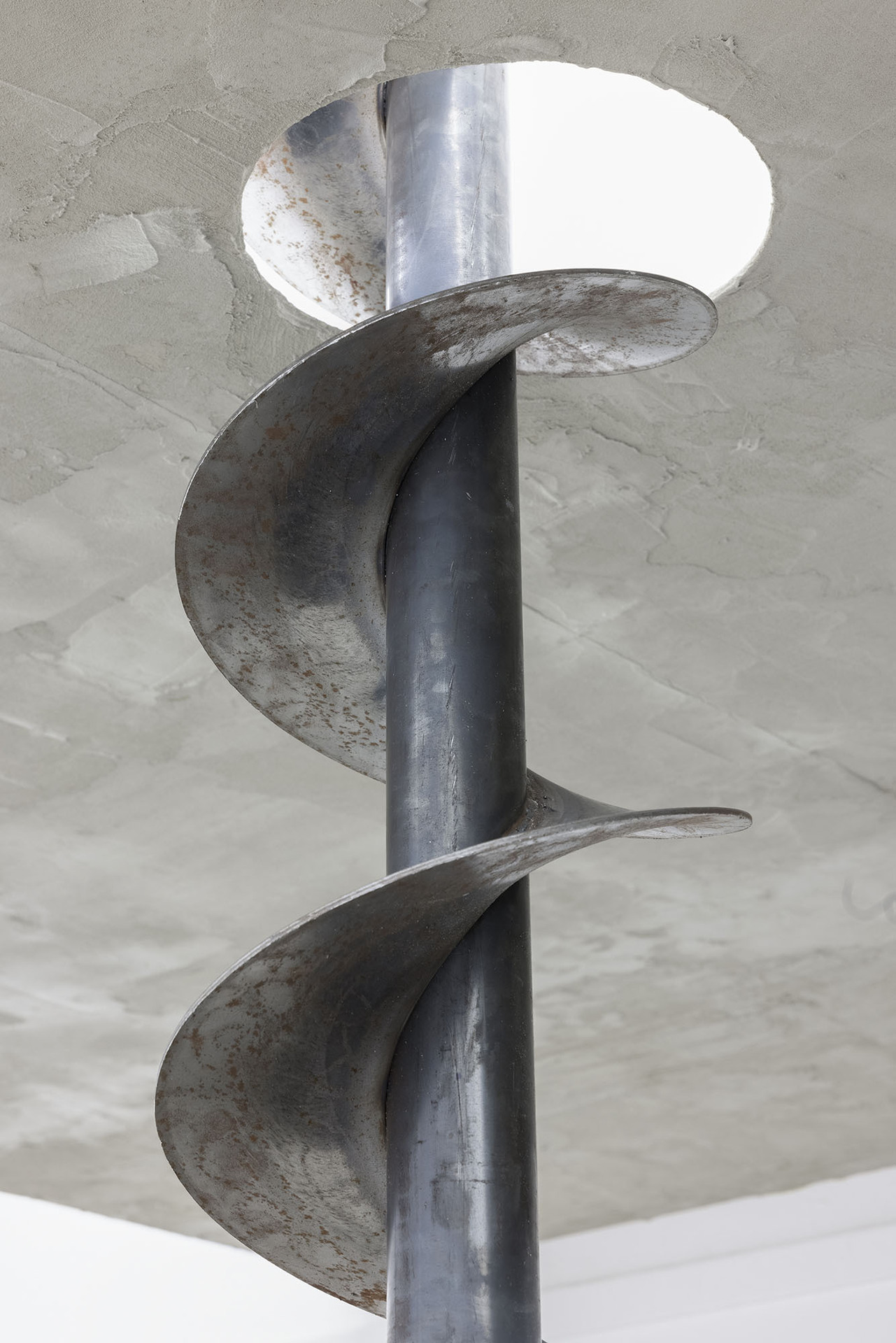


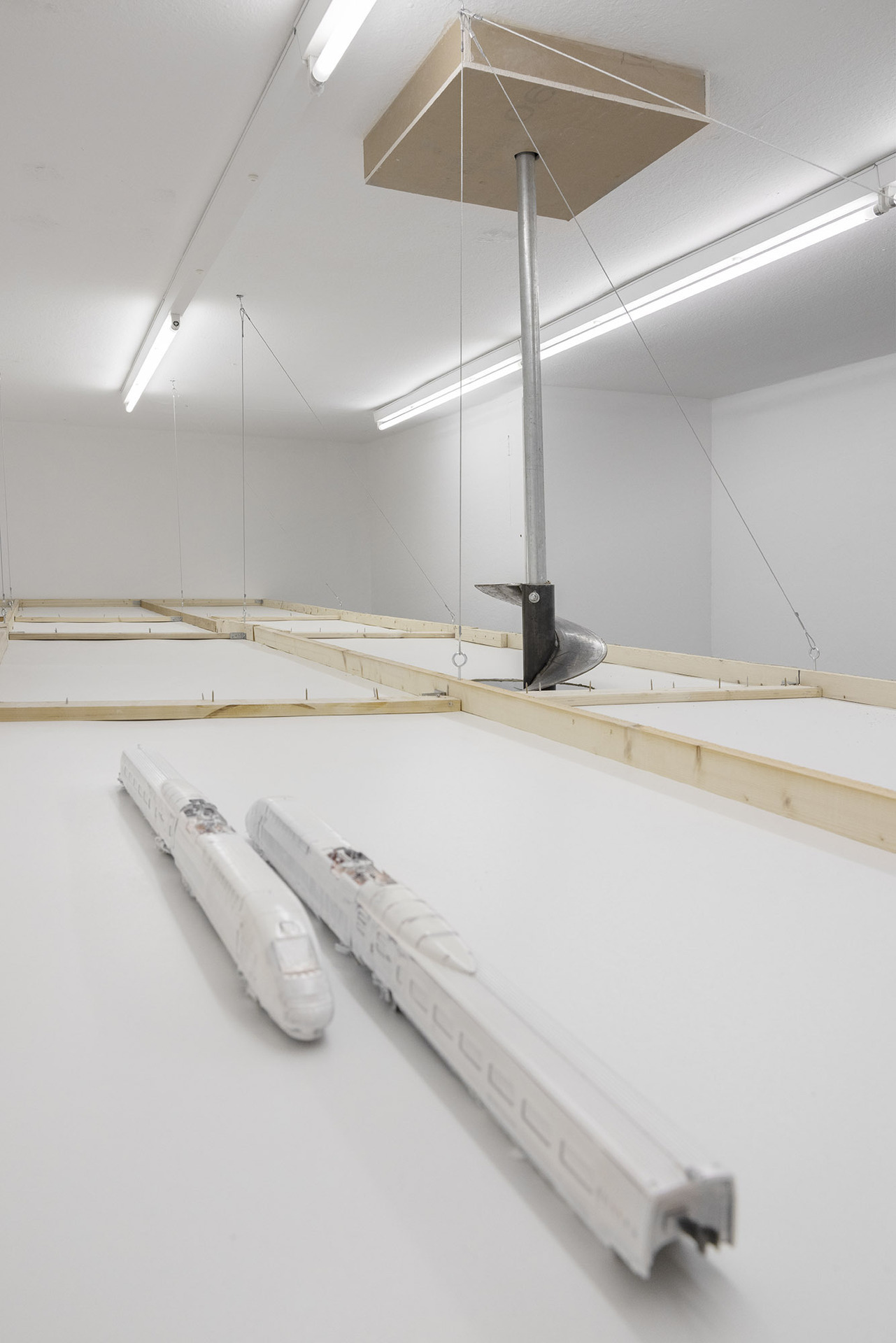

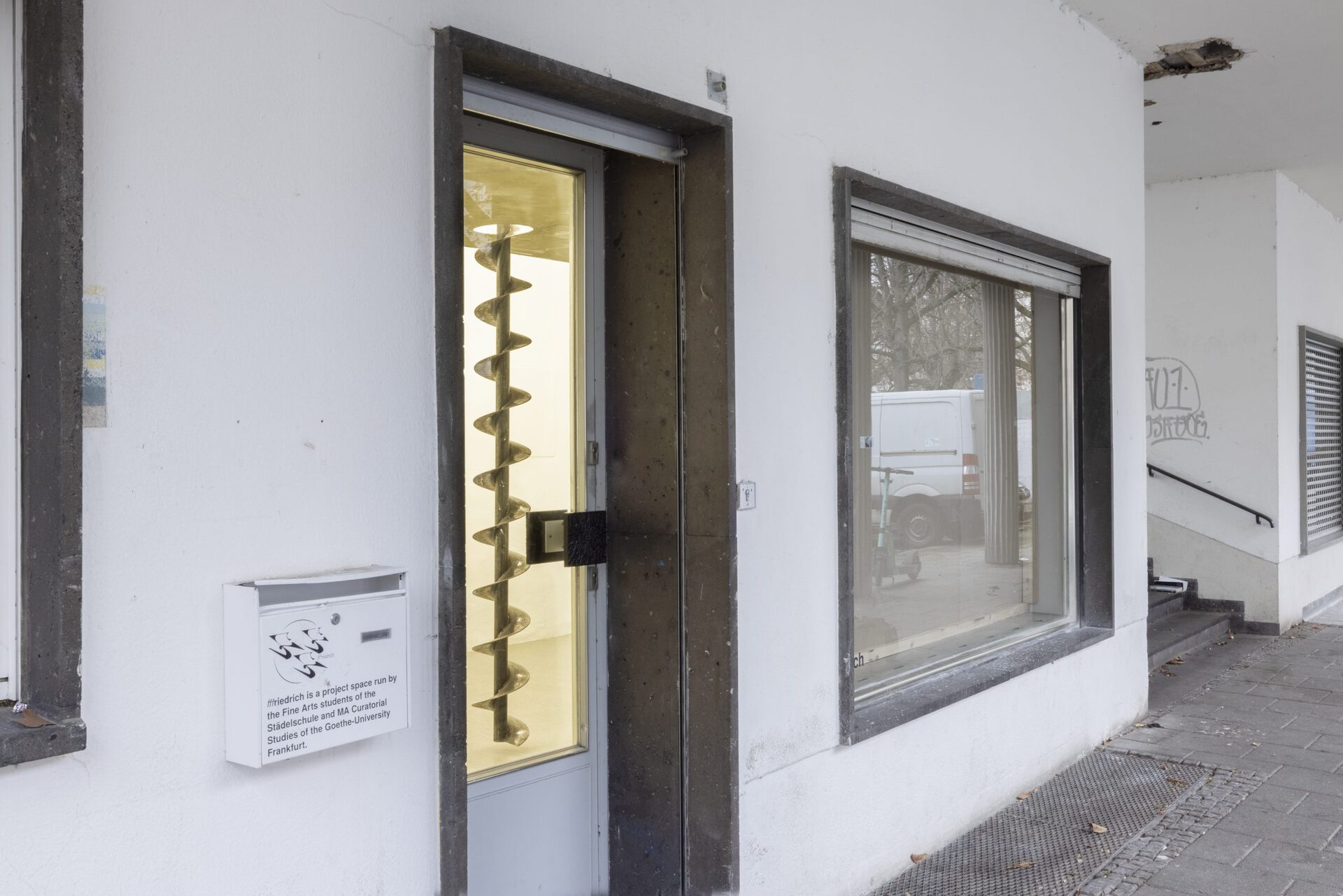
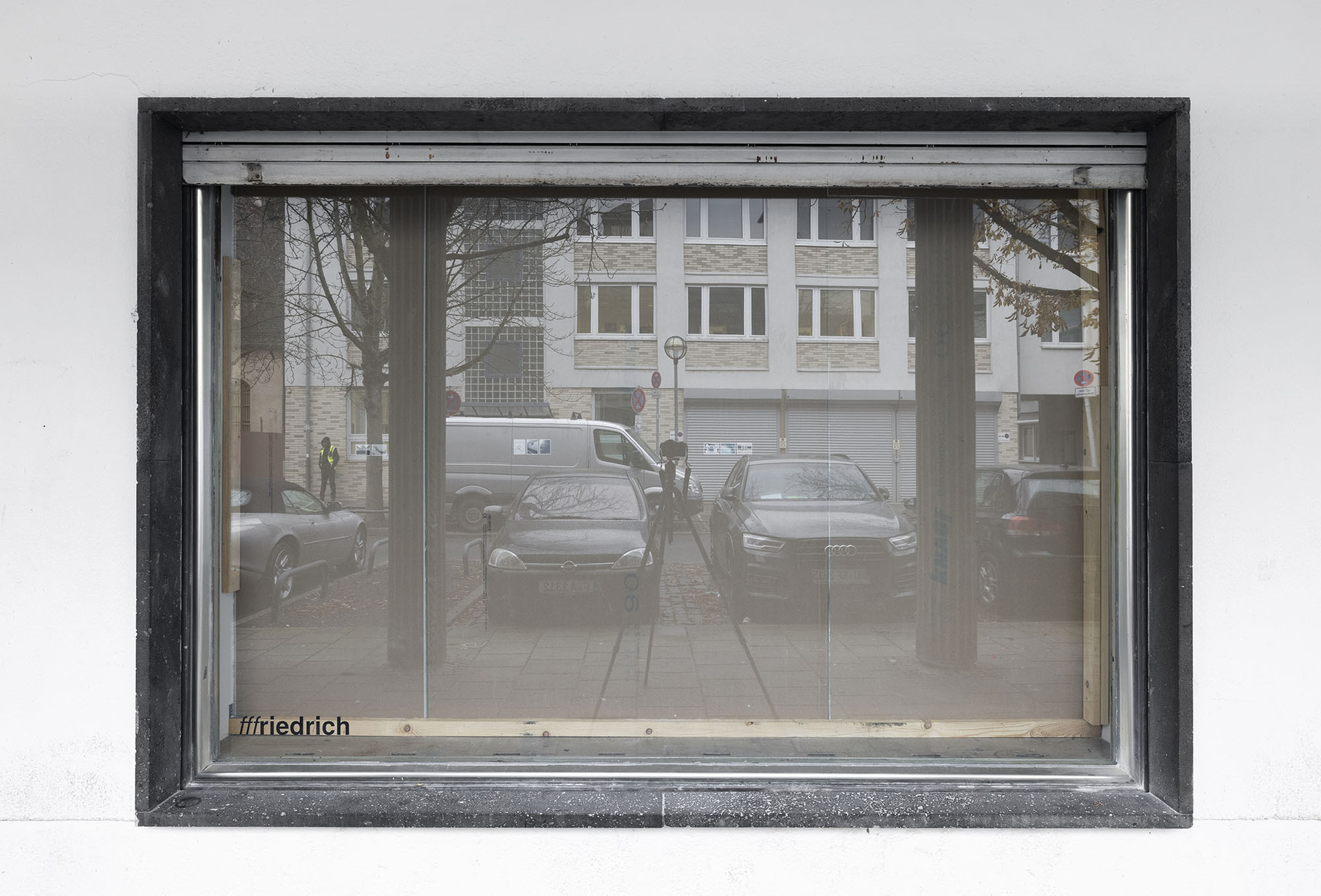

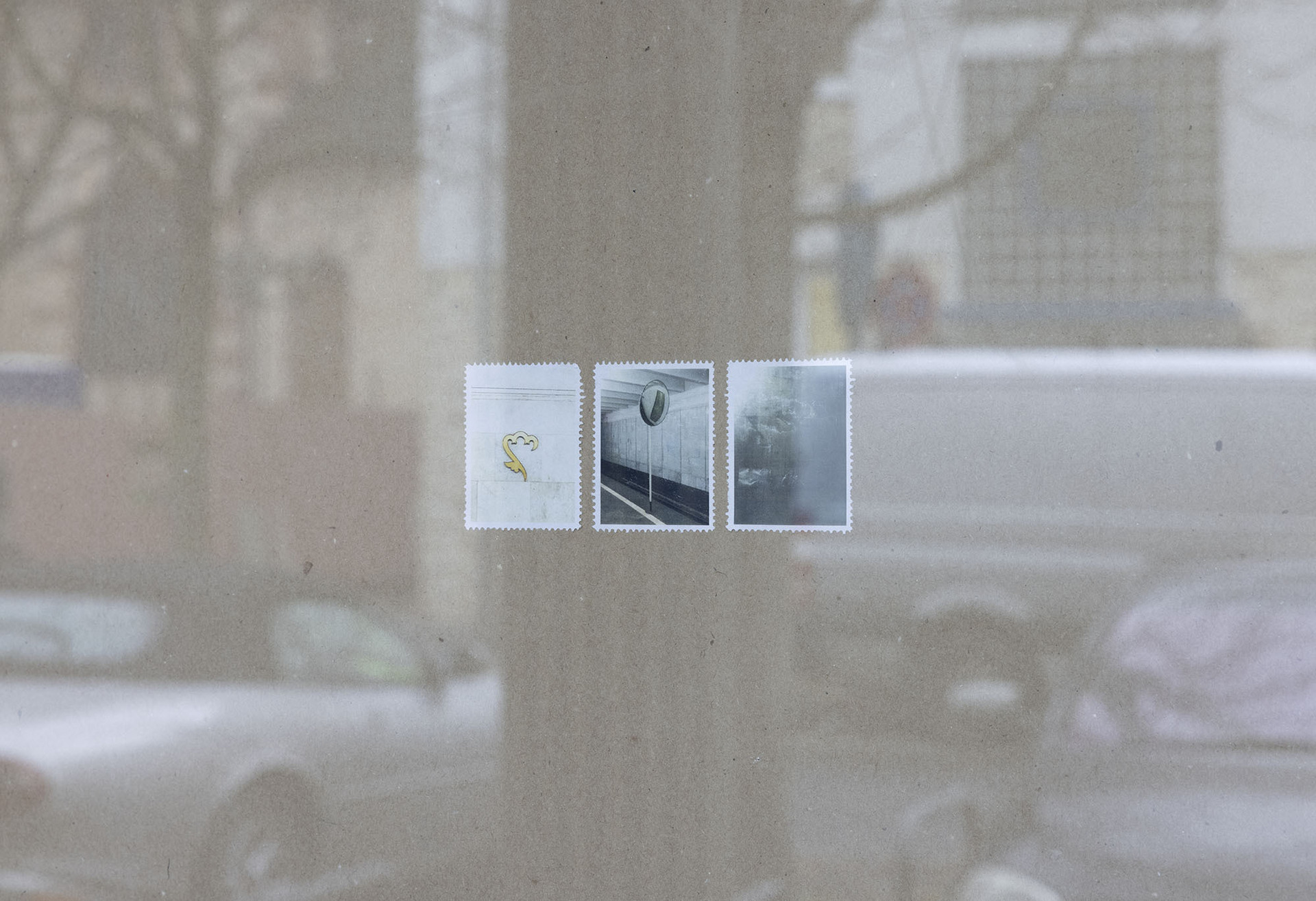
Location
fffriedrichDate
20.11 –04.12.2021Photography
Jiyoon ChungSubheadline
Rosario Aninat (*1993, Santiago, Chile) lives and works in Frankfurt am Main. Since 2019 she studies at the Städelschule in the class of Willem De Rooij. Simon Shim Sutcliffe (*1997, Toronto, Canada) lives and works in Frankfurt am Main. Since 2019 he studies at the Städelschule in the class of Hassan Khan.Text
Damocles’ Drill.
Perhaps you know about the sword of Damocles, the story about the hanging sword. I mention it because of the huge drill bit that hangs here in the room as well. A large hanging weapon or tool. The first thing I can say about “the sword of Damocles”, as the story is knows, is that it is a misleading expression, because the sword never belonged to Damocles—apparently Damocles himself did not even exist—but to King Dionysius, who left it hanging by a hair over the throne where Damocles was sitting. All this started because Damocles was a flattering courtier of King Dionysius, praising the king’s fortune and power all the time. So the king offered him to exchange places for a day (like in a reality show), but leaving a sword hanging by a horse hair over the throne and Damocles’ head. Fear took hold of Damocles, who ended up begging the king for each to return to his place before the day was over.
Some say that King Dionysus wanted to give Damocles an idea of the constant anxiety that comes with the duties of a king. Others draw further lessons from this story, they point out that Dionysius was a tyrant, a cruel king, and that however rich and powerful he was, the meaning of the sword was that he would never find peace and happiness, because the powerful man makes a great number of enemies and constantly fears for his life, even sitting on his throne—or specially while sitting there, because of the constant threat from the hanging sword.
All readings of the story usually go along this moralizing line, assuming the perspective of Damocles. I think they forget an important detail of the story, which is that Dionysus was a cruel king, and a cruel person is not inclined to come up with moralizing conclusions about his life. On the contrary, everything a cruel man does is nothing but a celebration of himself. Yes, the sword frightened Damocles, but perhaps for the king it had a different meaning. What if the sword was more like a drill bit like the one hanging here in this room? Just like a tool. For instance, a drill to open a head1, just like when, after his death, they opened Lenin’s head and extracted his brain to study it (I imagine the also used a saw and other tools). Perhaps the sword was simply for the king’s personal use, always available to seize it himself and decapitate someone whenever he felt like it. Then, the sword is not a message for the king but for all those in his court, because the sword hangs over their heads as well.
After all, and that is another important detail of the story, a horse hair is not a human hair. A horse hair does not break so easily, and its function in antiquity could be equivalent to that of a plastic security seal today: to both prevent something from moving, but remove it easily if necessary. Damocles was terrified at the sight of the hanging (or floating) sword because he himself would never have dared to break the horsehair seal and seize this tool, unlike the king, who could do it whenever he wanted, because he is the king, right?: We are not the same, is then the lesson that perhaps King Dionysus wants to give to Damocles and everyone else, and the sword is the tool of my trade.
Perhaps you also know about some modern architectural projects that were inadvertently or not meant as palaces for the common man, grand spaces for the masses whose heroism is comparable to that of the great kings of the past, whose greatness could only fit inside a great palace whose dimensions are never enough—I am thinking of majestic subway stations, now that we are here, but also of gardens, arcades, boulevards, shopping malls, amusement parks, museums. Now, we the commoners dwell in palaces meant for us all the time, perhaps we even sit at the throne for a while when our last post got +100 likes.
Which makes me wonder, from where does the tyrant watch us?
___________
1 Granted, the drill bit is larger than one would expect, but is there such a thing as too large for a tyrant? Is there such a thing as a palace too large for him, a too large sculpture, a too large court, a too large country?
Domingo Martinez